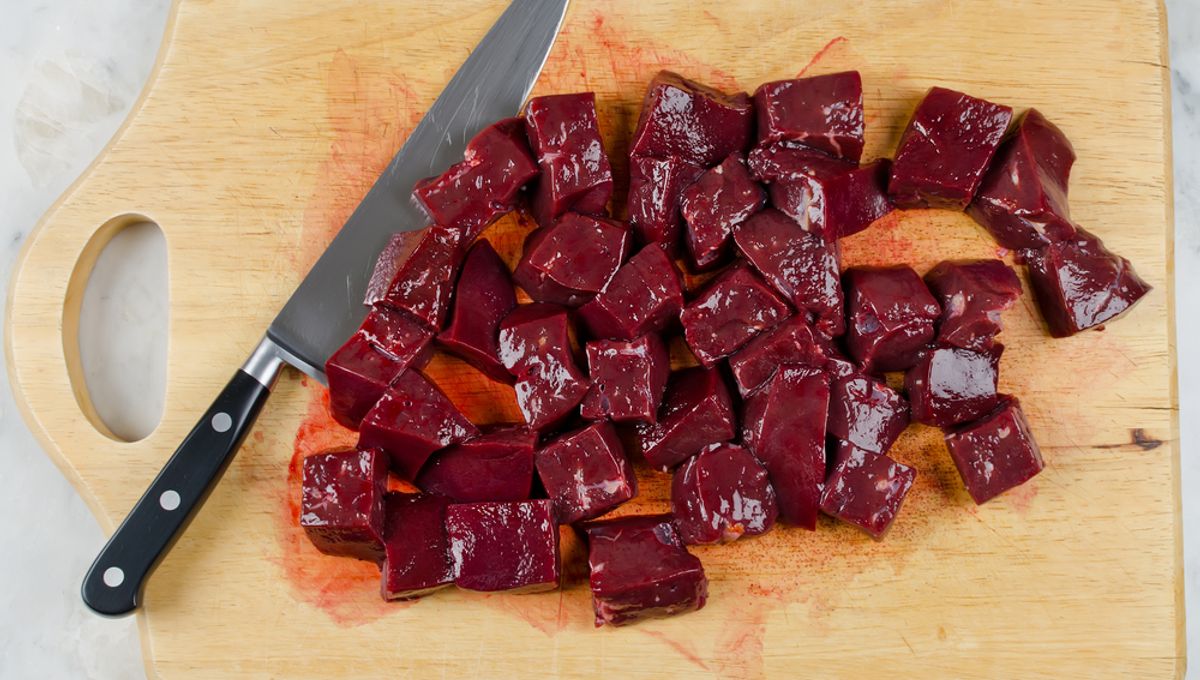
Chowing down on raw liver has recently become the in-vogue supplement for health nuts and gym bros looking to supercharge on nutrients. You’ll perhaps be aware of Liver King, a social media personality who’s gained a vast following on the basis that he eats raw organ meat every day. What a time to be alive. However, is it actually safe to be consuming raw liver regularly?
First things first, there’s no denying that liver is one of the most nutritionally dense foods on the planet. Along with being rich in protein, it’s loaded with high levels of iron, vitamins, and many other useful micronutrients.
According to the US Department of Agriculture, just 113 grams (4 ounces) of raw beef liver contains:
- Calories: 153
- Fat: 4.1 grams
- Sodium: 78 milligrams
- Carbohydrates: 4.4 grams
- Protein: 23 grams
- Iron: 5.54 milligrams
- Potassium: 354 milligrams
- Zinc: 4.52 milligrams
- Selenium: 44.9 micrograms
- Vitamin A: 5,620 micrograms
- Vitamin B12: 67 micrograms
- Vitamin D: 1.36 micrograms
- Vitamin K: 3.5 micrograms
- Folate: 328 micrograms
- Choline: 376 micrograms
- Retinol: 5,590 micrograms
That nutritional profile is hard to beat. Some people opt to eat liver raw as cooking it can decrease certain nutrients in food, especially water-soluble ones like vitamin C and B vitamins.
That said, eating raw meat can come with its dangers. Many health experts will recommend against eating raw liver due to the presence of bacteria and other pathogens that can lead to food poisoning, most notably E. coli and Campylobacter. This warning is especially important for people who are pregnant or with a weakened immune system.
There is some indirect evidence that the risk may be negligible for healthy people with robust immune systems. One study in 2019 looked to see whether banning raw beef liver in restaurants across Japan affected the rate of E. coli infections. It concluded that the ban didn’t decrease the number of people getting food poisoning, suggesting the risk of E. coli from eating raw liver was low to begin with.
Conversely, infections from raw liver can turn very nasty in rare circumstances. A case study – also from Japan, funnily enough – explained how a 48-year-old woman with no health conditions fell seriously ill with meningitis from a Campylobacter infection, most likely linked to her appetite for raw beef liver. While this is merely a one-off case, it indicates some risk does exist.
There is such a thing as too much of a good thing. Eating large amounts of liver can lead to symptoms of vitamin A toxicity, which happens when the liver can’t break down the excess vitamin A quickly enough. Symptoms of this condition include headaches, dizziness, drowsiness, rashes, irritated skin, nausea, and vomiting. However, you would have to be eating significant amounts of liver regularly for this to be an issue.
While few doctors would recommend people gorge on buckets of raw liver from the supermarket every morning, taking on that risk is up to the individual.
For those not tempted by the thought of eating sloppy, potentially risky organs, there are also liver pill supplements available. Their potential health benefits, however, have not been rigorously studied.
All “explainer” articles are confirmed by fact checkers to be correct at time of publishing. Text, images, and links may be edited, removed, or added to at a later date to keep information current.
The content of this article is not intended to be a substitute for professional medical advice, diagnosis, or treatment. Always seek the advice of qualified health providers with questions you may have regarding medical conditions.
Source Link: Eating Raw Liver Is All The Rage, But Is It Safe?